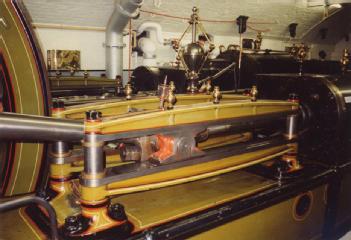
Tower Bridge London |
SE1 2UP London, Great Britain (UK) |
|
| Address |
Tower Bridge Rd
Exhibition Office |
| Floor area | only roughly guessed: 6 000 m² / 64 583 ft² |
Museum typ
Exhibition
Bridges and Tunnels
- Steam engines/generators/pumps
|
Opening times
|
April – September 10:00 – 17:30 (last admission); October – March 09:30 – 17:00 (last admission) |
||||||||
|
Status from 01/2015
|
Adult £9.00; Concessions £6.30; Student £6.30; Child(5-15) £3.90 | ||||||||
| Contact |
|
||||||||
| Homepage | www.towerbridge.org.uk | ||||||||
Our page for Tower Bridge London in London, Great Britain (UK), is not yet administrated by a Radiomuseum.org member. Please write to us about your experience with this museum, for corrections of our data or sending photos by using the Contact Form to the Museum Finder.
| Location / Directions |
The nearest London Underground tube stations are Tower Hill on the Circle and District line, London Bridge and Bermondsey, and the nearest Docklands Light Railway station is Tower Gateway |
| Description | From Wikipedia, the free encyclopedia: Tower Bridge (built 1886–1894) is a combined bascule and suspension bridge in London which crosses the River Thames. It is close to the Tower of London, from which it takes its name, and has become an iconic symbol of London. The bridge consists of two towers tied together at the upper level by means of two horizontal walkways, designed to withstand the horizontal forces exerted by the suspended sections of the bridge on the landward sides of the towers. The vertical component of the forces in the suspended sections and the vertical reactions of the two walkways are carried by the two robust towers. The bascule pivots and operating machinery are housed in the base of each tower. Hydraulic systemThe original raising mechanism was powered by pressurised water stored in several hydraulic accumulators. The system was designed and installed by Hamilton Owen Rendel while working for Sir W. G. Armstrong Mitchell & Company of Newcastle upon Tyne. Water, at a pressure of 750 psi (5.2 MPa), is pumped into the accumulators by two 360 hp (270 kW) stationary steam engines, each driving a force pump from its piston tail rod. The accumulators each comprise a 20 inches (51 cm) ram on which sits a very heavy weight to maintain the desired pressure.In 1974, the original operating mechanism was largely replaced by a new electro-hydraulic drive system, designed by BHA Cromwell House. The only components of the original system still in use are the final pinions, which engage with the racks fitted to the bascules. These are driven by modern hydraulic motors and gearing, using oil rather than water as the hydraulic fluid. Some of the original hydraulic machinery has been retained, although it is no longer in use. It is open to the public and forms the basis for the bridge's museum, which resides in the old engine rooms on the south side of the bridge. The museum includes the steam engines, two of the accumulators and one of the hydraulic engines that moved the bascules, along with other related artefacts. Tower Bridge Exhibition and the tower walkwaysThe high-level open air walkways between the towers gained an unpleasant reputation as a haunt for prostitutes and pickpockets; as they were only accessible by stairs they were seldom used by regular pedestrians, and were closed in 1910. In 1982 they were reopened as part of the Tower Bridge Exhibition, a display housed in the bridge's twin towers, the high-level walkways and the Victorian engine rooms. The exhibition charges an admission fee. It uses films, photos and interactive displays to explain why and how Tower Bridge was built. Visitors can access the original steam engines that once powered the bridge bascules, housed in a building close to the south end of the bridge.This must-see London attraction invites you to step inside the most famous bridge in the world to explore its iconic structure, spectacular views, modern exhibitions and magnificent Victorian Engine Rooms! Experience the spectacular new glass floor and stunning London views from the high-level walkways and continue to the Victorian Engine Rooms to learn about the inner workings of the most famous bridge in the world. |
Radiomuseum.org presents here one of the many museum pages. We try to bring data for your direct information about all that is relevant. In the list (link above right) you find the complete listing of museums related to "Radio & Co." we have information of. Please help us to be complete and up to date by using the contact form above.
[dsp_museum_detail.cfm]
| Data Compliance | More Information |

 towerbridge.org.uk
towerbridge.org.uk 
















